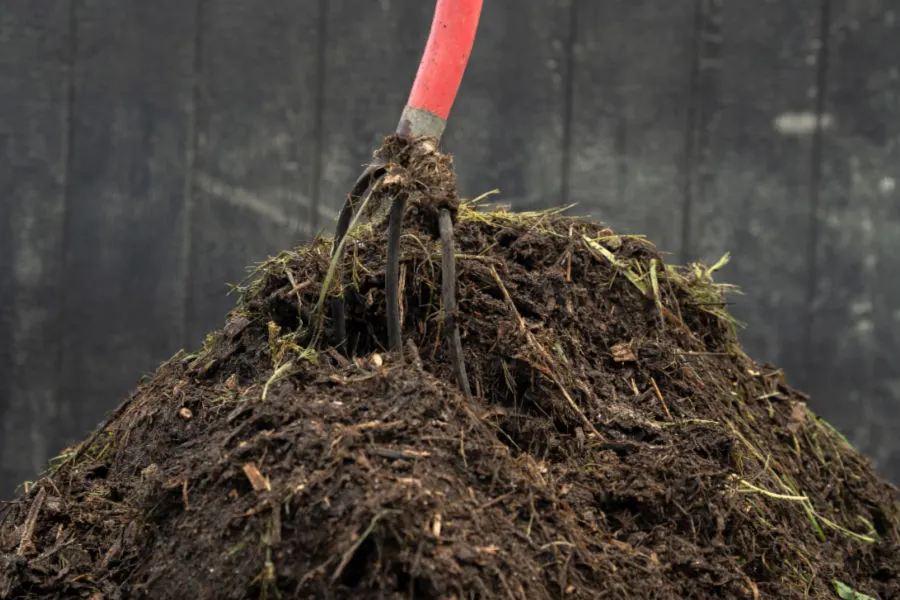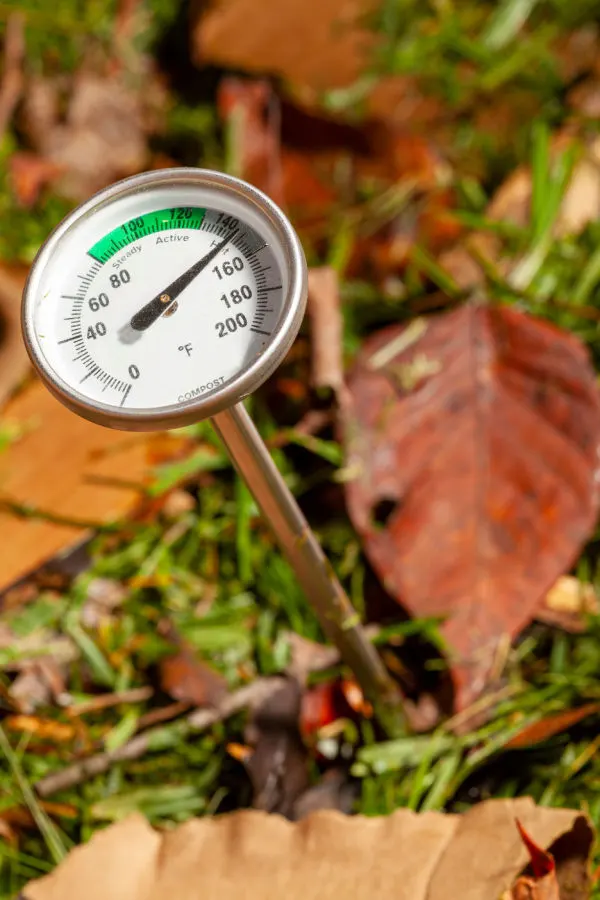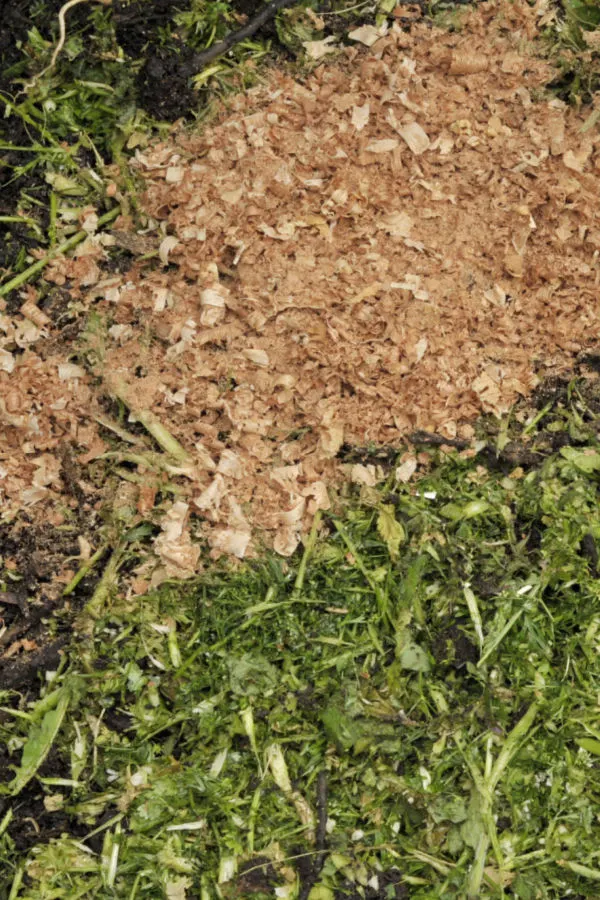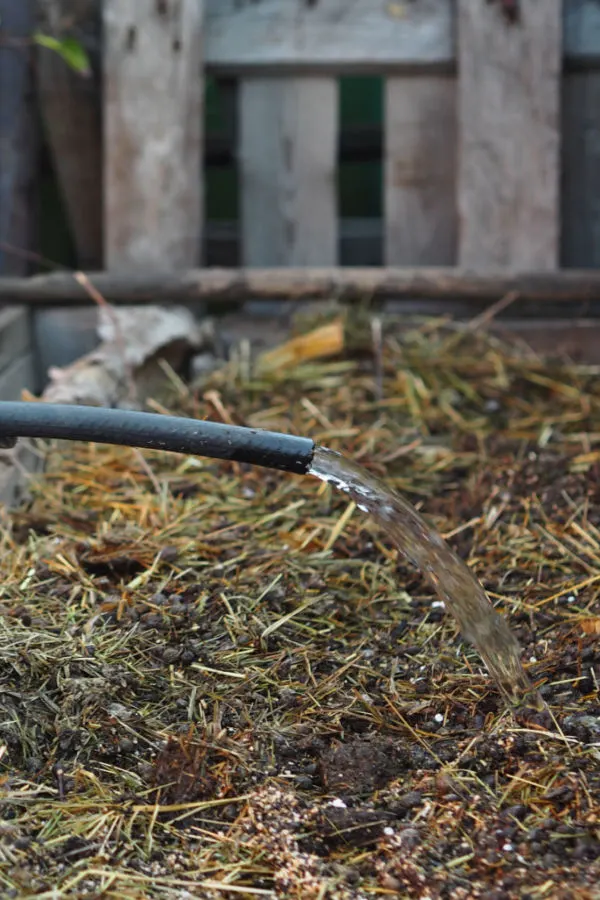One of the best ways to get your garden season off to a great start this spring is by building a compost pile early – especially if you can create a hard-working pile that gets hot fast enough to provide you with compost by mid summer!
When it comes to creating nutrient-rich soil and powering healthy plants, compost is a must. Its perfect balance of slow-release nutrients helps rejuvenate and energize tired soil. At the same time, those nutrients also easily absorb into plants, helping to develop strong roots and lush foliage.
Not only does creating a spring pile provide future power for your flowers and vegetable plants, it’s also the perfect way to help get the most from spring clean-up chores.

Clearing leaves and old plant material from your flowerbeds in the springtime can create quite the pile of organic matter. So can adding in all of the cuttings from pruning back perennials, shrubs and bushes.
But the abundance of available materials doesn’t end there. Frequent cuttings of spring lawns are another wonderful source of material for a pile. As are leftover hanging baskets and container plants from last year – still filled with decaying plant debris and soil.
The point is, with just a bit of work, you can come up with plenty of compost materials in the spring. But the real key to success when composting is knowing how to turn all of those valuable materials into a powerhouse pile that heats up and decomposes into “black gold” fast!
How To Create A Hot Spring Compost Pile
Although there are a plethora of materials readily available, how you add them, what you add in with them, and how often you attend to them ultimately will determine just how quickly your compost will finish.
The good news is that building and maintaining a pile isn’t difficult in the least. All it really takes is implementing a few tried and true strategies that create an active pile. With that in mind, here are 5 simple secrets to build your pile this spring and get it cooking fast!

Make Sure Your Pile Is Big Enough
One of the best ways to get a pile to heat up is to make sure it is large enough to generate and maintain its core heat. In order to generate heat, compost piles need to be a minimum of 3′(W) x 3′(L) x 3′(H). Any smaller and there simply isn’t enough material for the pile to stay hot.
Although it can be larger, the 3′ x 3′ x 3′ size works extremely well for homeowners. Its mass is big enough for heating up but still small enough to turn and manage. Larger piles can be difficult to mix and turn, which as you will see later is a huge key to success. (See 3x3x3 DIY Compost Bin Plans)
Chop & Shred Ingredients – How To Create A Hot Spring Compost Pile
The size of the debris you add to your pile is a huge factor in how long the pile will take to decompose into usable compost. The larger the pieces going in, the longer it will take for your pile to heat up and the materials to break down.
Whole leaves, large stems and small brush and twigs are slow to decompose. By simply chopping or shredding pieces first, it will speed up the process greatly. It truly is a big key to making compost fast!
For starters, by cutting material up, there is less total surface area that needs to break down. Even more, all of cuts and tears on the smaller pieces expose more edges to the bacteria and organisms that break it down.

If you have a shredder, it can certainly work well for the process. But a lawn mower or push mower is a great (and much cheaper) alternative to breaking down lighter plant materials (leaves, perennial cuttings, etc.) in short order.
One final note on adding materials – try to get a good mix of materials for a better pile. Compost piles that are made of 4 parts dry (leaves, twigs, dead plant materials) and 1 part green material (coffee grounds, manure, green grass clippings, vegetable scraps) will heat up and work best.
The ratio doesn’t have to be exact, but the closer you are to that blend, the faster your pile will heat up and break down.
Activate Your Pile – How To Create A Hot Spring Compost Pile
In addition to adding a good mix of materials and keeping them small, you also need to help activate your pile with the microbes and organisms needed to break materials down. All piles will eventually develop their own micro-life, but introducing it from the start speeds a pile’s decomposition process up greatly.
To do this, there are two methods that work well – adding compost from an existing compost pile, or adding in a compost starter mix to a brand new pile.
Finished, or nearly finished compost is teeming with all kinds of living bacteria and life. When mixed into a new pile, it will quickly introduce the bacteria and begin to work. How much should you add? Adding in a five gallon bucket of old compost to a new pile is more than enough to do the job.
If you don’t happen to have existing compost, a compost starter is the answer. A compost starter, much like existing compost, introduces bacteria directly into a new pile where it can begin to work and multiply.
Once you have your first pile completed, you can simply start using compost from old pile from there on out. Affiliate Product Link: Jobe’s Organics 09926 Fast Acting Fertilizer Compost Starter
This is why building or investing in a two compost bin system is a great idea. You can always have a pile finished or finishing, while a new pile is getting underway. Having it all in one space also makes it easy and convenient! See: How To Create An Inexpensive Homemade Compost Bin That Works!
Keep Moisture In Your Pile – How To Create A Hot Spring Compost Pile
In addition to a starter, moisture is a key ingredient for getting a compost pile to heat up. The key is getting your pile’s interior to stay slightly moist, but never saturated or overly wet.
The best analogy to think of for this is a well-wrung sponge. You can feel the moisture, but not enough to see liquid. That is exactly how you want your compost pile to be. If your compost pile is too dry, it won’t be able to heat up. If it’s too wet, it will stop the pile from heating up.

When first building, add just enough water to get the ingredients moist. If you get a lot of spring rain in your area, you may want to put a piece of plastic over your pile to keep it from becoming too wet. And if it’s too dry, add water as needed to keep it moist.
Adding Oxygen By Turning – How To Create A Hot Spring Compost Pile
Finally, once you build your spring compost pile, you will need to turn it frequently to give it a steady supply of oxygen. Without oxygen, a compost pile will lose heat and slow its decomposing activity to a crawl.
Use a pitchfork or shovel to turn your pile’s ingredients at least two to three times each week. If you can turn it daily, even better! This process allows oxygen to get into the core of the pile. It also turns the outer cooling edges back inside to heat up and break down faster.
When turning, be sure to add a little water to the core if you see it drying out. With just a little work, you will be rewarded with amazing compost, faster than you ever imagined!
Follow Our Facebook Page For Great Gardening Tips And Advice! This Is My Garden Facebook Page
This Is My Garden is a garden website created by gardeners, for gardeners. Jim and Mary Competti have been writing gardening, DIY and recipe articles and books and speaking for over 15 years from their 46 acre Ohio farm. They publish three articles every week, 52 weeks a year. Sign up today to follow via email, or follow along!
